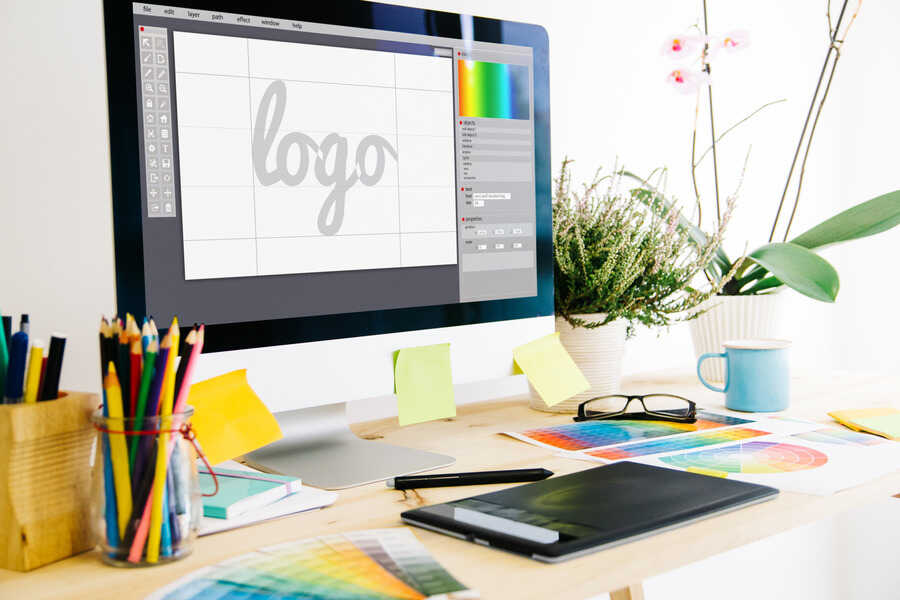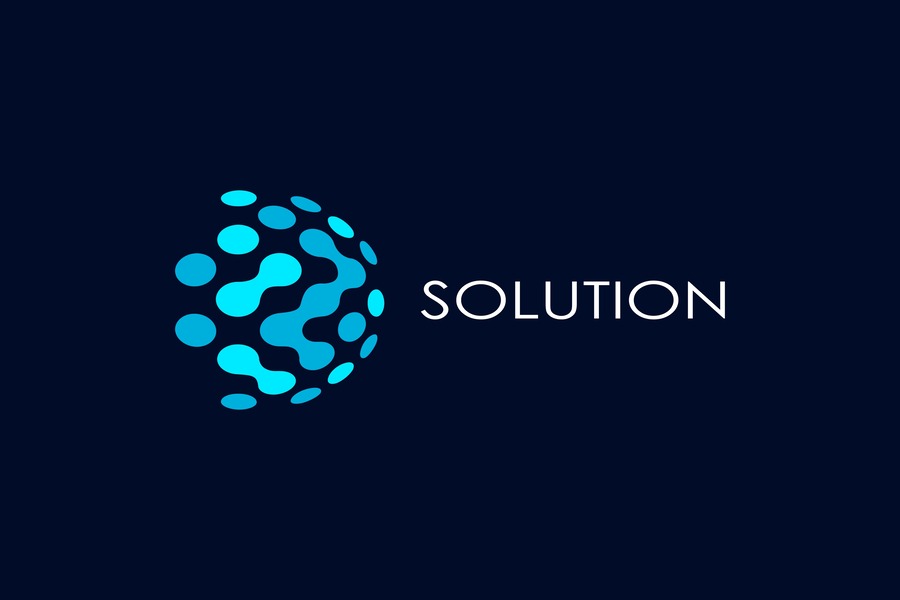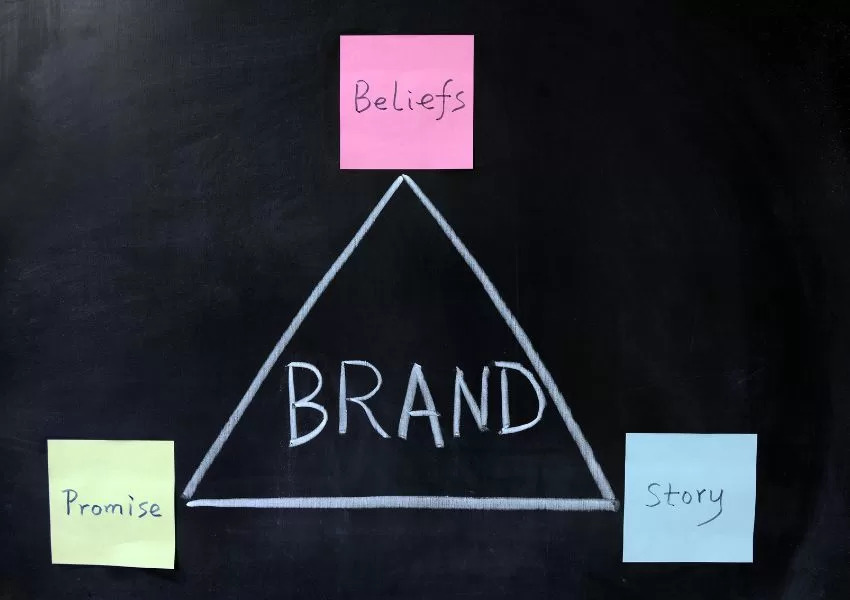Paul Rand, a great designer who created logos for major companies like IBM and UPS, says that a great logo doesn’t sell directly; it identifies. It is no secret that the sight of some logos immediately reminds people of a particular product or service. The flashes of memory are because the logo reminds the customer of a product or service offered by the company it identifies. A logo is supposed to be a direct reflection of a company’s brand identity.
Every brand’s dream is to have a logo that the customer so internalizes that they do not need extra motivation to purchase the products and services. As a brand, your logo reflects your company’s brand identity, so you should put more effort into designing one that will set you apart from your competition. But before we go any further, what is the difference between a logo, brand, and brand identity?
Logo 101
A logo is a graphic mark or a symbol that promotes a company’s identification and recognition in the public sphere. A brand relates to intangible marketing and business concept markers that distinguish a business and its products or services from competitors. On the other hand, a brand identity is a combination of expressions that define your company in the customer’s mind. They include logos, colors, typography, and the general tone used in your business. These three are central features in brand marketing.
Your potential customers may or may not notice the color palettes and typography you employ on social media posts, websites, television advertisements, etc. The one thing they will and should see is your logo. The quality of your product and service is essential, but what is the use of quality products if you cannot bring customers to access them? The best way to get these customers on board is to get them to notice you, and that can only happen through proper branding, which will give you a unique identity that sets you apart from the crowd.
A good logo design most likely draws from these eight different classes.
- Lettermark – These logos utilize the initials of each word in the brand name. They are common in cases where the brand name is too long. A good example is the NASA logo, which stands for National Aeronautics and Space Administration.
- Monogram – These logos resemble Lettermark logos but stand out from the latter by interlacing these brand letters instead of being side to side. Consider logos such as YSL or Louis Vuitton.
- Wordmark – Wordmark logos are one of the most common choices for logo designs. Wordmark logos use the brand name, only that they portray them in stylized letters. Good examples of logos utilizing this style include Walt Disney and Coca-Cola.
- Combination – Combination logos incorporate the company name/initials with a visual. This logotype is the most common choice for logo designers. A good example of combination logos is the NBC logo or Mastercard logo.
- Letterform – Letterform logos include only one highly personalized letter picked from the brand name. A key example is the ‘T’ in Tesla or the M in McDonald’s.
- Mascot – A mascot logo employs a fictional character with a widely known personality or the company’s founder in its design. Examples of brands utilizing these logos include KFC, with Colonel Sanders as its logo.
- Pictorial – These logotypes employ graphics that visually represent the brand name or the company’s role in product or service delivery. Apple has, for example, chosen an apple as its logo.
- Abstract – Abstract logos could simply be a series of shapes or abstract geometric patterns that, at first glance, might not seem to have any clear relationship with what the brand represents. These logos, however, tell the story of what the brand means. A good example is the interlocking rings on the Olympic logo, which are an ode to all the five continents that unite for the cause of the Olympics.
If you feel like your logo is not reflecting your brand identity, consider reworking it to fit the idea behind your brand. Starting to build a logo from scratch can be an intimidating process. You should consider using a logo maker to make the process easier and faster. Using logo makers will give you insights into the design process. You can also search for the best online logo makers for customizable designs and templates to inspire and quicken your design process.
Want to create a logo that truly reflects your brand and resonates with your target audience?
Contact Growth Hackers
Why Logos Affect Brand Identity
Now that you know the different logo designs, you must personalize your chosen style to reflect the identity you wish your customers to ascribe to.
There are many reasons why your logo should reflect your brand identity. Some of them are:
1. Your Logo Reflects Your Niche
A logo for a charity organization will not resemble one from a gaming company, nor a hospital’s that of a meat-packaging business. Your choice of a logo should reflect your business niche if it is to be a true reflection of your company’s brand identity.
At first glance, your target customers must be able to tell what service you’re offering when they look at your logo. They can make an educated guess through the logo’s choice of colors, imagery, and lettering. If your company focuses on high-octane activities like war gaming, consider a logo that reflects aggression and strength through high-contrast colors and images depicting war or struggle. If, on the other hand, the focus is on a reflective and peaceful activity like yoga, consider a logo with yoga graphics and calm colors like sky blue, purple, or white to reflect calm and tranquility.
Overall, for your logo to truly reflect your brand identity, it should communicate what the brand is about without being confusing, ambiguous, or overwhelming to your target audience.
2. Your Logo Design Incorporates Your Brand Colors
Brand colors inform the general feel of your brand by exciting the corresponding emotions from your customers. Imagine a company with 90s fonts and design. The same company should have a logo that corresponds with its design so that there is no gap and absorption. Brand colors might differ between standing out or blending into the crowd. Colors get your audience to see what you want them to see or feel what you want them to feel.
Being at the forefront of customer interaction, your logo utilizes the colors used in your branding kit. A good logo grabs the attention of your target customers, creates a solid first impression in their minds, and separates you from the competition. Your logo is the conduit upon which your entire brand is relayed to the world. It must reflect your company’s brand identity.
It’s time to create a logo that truly captures the essence of your company’s identity!
3. Your Logo Tells Your Brand Story
An important strategy in making your logo a true reflection of your company’s brand identity is to design a logo that will tell your brand’s story. A brand story recounts the narrative that drove your company’s inception, identity, and mission. Whether you opt for an abstract or a pictorial logo, ensure that it has a harmonious relationship with what your brand stands for, what it does, and even where it plans to go.
The Olympic rings, created in 1913, are a perfect example of a logo telling a brand story. The five rings represent the five continents competing in the Olympics at the time. Their colors, blue, yellow, black, green, red, and white background represent the flags of each participating country.
If you want to foster a stronger brand identity, focus on a logo your customers will be able to interpret easily. To do this, make it straightforward, reduce the number of details on the logo to make it compact and relevant, avoid outdated logo models, and make it appealing. A chaotic logo is a sign of a chaotic brand, and who wants to relate to a chaotic brand?
4. Your Logo Reflects What Is Unique With Your Brand
There are several factors to keep in mind when forging a brand identity. The most important are authenticity, core values, honesty, customer service, and a quality product. Unfortunately, all these good traits are present in practically every company around. So, the question here is; what makes your customer service stand out? What about the quality of your product that will make me buy from you and not your competitor?
A logo is an excellent place to show your customers why your products have an edge over your competitors. If, for example, your brand identity rests on making carbon-neutral, reusable, or environmentally friendly products, incorporate that in your logo. Such quirks are likely to give you an edge over your competitors offering the same products and services as you. Your logo identifies your uniqueness to your customers and should reflect your brand’s uniqueness.
5. Your Logo Reflects Your Target Audience
A logo design for a youth-oriented company should not resemble one meant for a middle-aged or older people’s company. Your target audience will determine how you design your logo. Young people may appreciate vibrant colors and youthful and fancy designs, while the older generations might prefer the inverse. If your product or service targets children, consider designs they may find appealing to ensure the brand reaches the target audience. Your logo must be true to your target audience to truly reflect your brand identity.
Final Words On Why Your Logo Should Be A True Reflection Of Your Company’s Brand Identity
A brand identity depends on all elements being in congruence. Your brand colors must be visible on your online and offline communication channels. Your logo, the first item in the branding package that your customers will often see, might be the difference between them interacting with your brand or ignoring it altogether. Consider the principles of a good logo design to ensure the brand remains memorable in your target audience’s minds. Ensure your logo communicates your brand story and registers in your client’s mind.
Growth Hackers is one of the leading graphic design companies helping businesses from all over the world grow. There is no fluff with Growth Hackers. We help entrepreneurs and business owners create a logo that reflects their company’s brand identity, increase their productivity, generate qualified leads, optimize their conversion rate, gather and analyze data analytics, acquire and retain users and increase sales. We go further than brand awareness and exposure. We make sure that the strategies we implement move the needle so your business grow, strive and succeed. If you too want your business to reach new heights, contact Growth Hackers today so we can discuss about your brand and create a custom growth plan for you. You’re just one click away to skyrocket your business.








